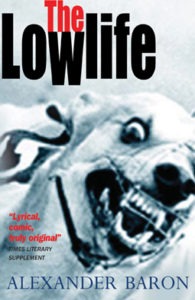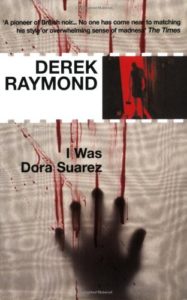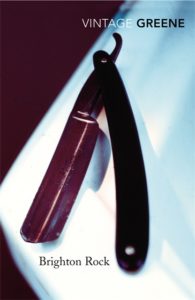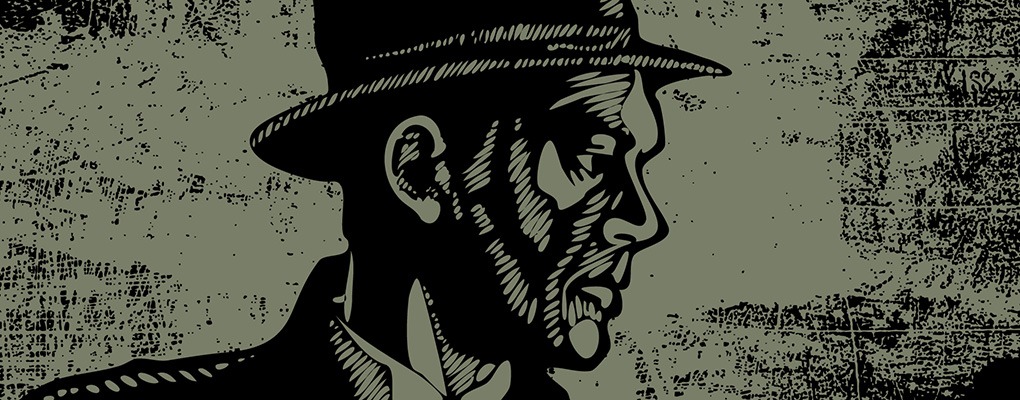Books
Top 10 British Noir Titles of Yesteryear
by Laura Wilson
All of these are books by British authors, with British settings. For the purpose of this list, I have slightly – but only very slightly – expanded on Otto Penzler’s description of noir fiction: ‘Most mystery fiction focuses on the detective, and noir fiction focuses on the villain. The people in noir fiction are dark and doomed – they are losers… If you have a private eye, the private eye is a hero; and he’s going to solve the crime and the bad guy will be caught. That’s a happy ending, but that’s not a noir ending.’
The requirement for British settings obviously rules out such books as No Orchids for Miss Blandish by James Hadley Chase, the ‘Lemmy Caution’ novels of Peter Cheyney (This Man is Dangerous, Dames Don’t Care, etc), the ‘Hank Jansen’ novels (Lady, Mind that Corpse; Slay-Ride for Cutie; Hotsy, You’ll be Chilled, etc), and the fabulously-titled output of writers such as Ben Sarto and Darcy Glinto (including Duchess of Dope, Back-Alley Blonde, One More Nice White Body, and Lady, Don’t Turn Over*).
*No, honestly. I’m not making these up.
There are no women listed here. I haven’t been able to find any British female authors who were writing this particular type of noir fiction in the pre- or post-war period, using entirely British settings. If there are some, I should love to know about them.
Top Ten British Noir Titles of Yesteryear
10. Wide Boys Never Work (1937) by Robert Westerby (1909-1968) is the story of Jim Bankley, a restless, disenchanted young man who comes to the ‘Big Smoke’ after becoming embroiled with a London gang at a local dog track. Once there, he starts work for a dodgy used-car dealer, and finds himself drawn into Soho’s criminal milieu. As Iain Sinclair pointed out in the preface to the 2008 edition, ‘The set pieces at the dog track, the drinking club, the boxing ring, became standards of low-budget British cinema. You can cast the thing yourself: Gordon Harker, Googie Withers, Jack Warner, Herbert Lom, Diana Dors, Stanley Baker’. In fact, the book was filmed, not particularly well, as Soho Incident (1956), with Faith Domergue and Lee Patterson.
9. Goodbye Piccadilly, Farewell Leicester Square (1966) by Arthur La Bern (1909-1990) is the story of a serial rapist and strangler of women, and is set in London, shortly after the Second World War. An RAF veteran, Richard Blamey, who has taken part in the fire-bombing of Dresden, is falsely convicted of the killings, partly on the basis of confusion over his drunken confession that he has killed ‘thousands’ of people. The book was the basis for Alfred Hitchcock’s 1972 film, Frenzy, starring Barry Foster, Jon Finch and Alec McCowen (subsequent editions were re-titled). La Bern also wrote It Always Rains on a Sunday, which was filmed under the same name (1947, dir. Robert Hamer, starring Googie Withers and Jack Warner).
 8. The Lowlife (1963) by Alexander Baron (1917-1999) is the story of an East End Jewish gambler and a wonderful portrayal of a fast-vanishing way of life. Harryboy Boas’s tenuous control over his life slips away as, via a new family who move into his building, he is drawn into a murky underworld. Baron, who has been described as ‘among the finest and most underrated novelists of the post-war period’, also wrote for television, and his work includes the original adaptation of the Poldark novels of Winston Graham. Baron published Strip Jack Naked, a sequel to The Lowlife, in 1966.
8. The Lowlife (1963) by Alexander Baron (1917-1999) is the story of an East End Jewish gambler and a wonderful portrayal of a fast-vanishing way of life. Harryboy Boas’s tenuous control over his life slips away as, via a new family who move into his building, he is drawn into a murky underworld. Baron, who has been described as ‘among the finest and most underrated novelists of the post-war period’, also wrote for television, and his work includes the original adaptation of the Poldark novels of Winston Graham. Baron published Strip Jack Naked, a sequel to The Lowlife, in 1966.
7. The Gilt Kid (1936) by James Curtis (1907-1977) has been described as a ‘low-life masterpiece’. It’s the tale of William Kennedy, a.k.a. the eponymous ‘Gilt Kid’, a housebreaker with (like his creator) Communist sympathies, who, recently released from prison, has no intention of going straight but joins re-joins the London underworld and becomes involved in a robbery which does not go according to plan… Other novels by Curtis include They Drive By Night and There Ain’t No Justice, both of which were filmed.
6. Night and the City (1938) by Gerald Kersh (1911-1968) is the story of Soho denizen, pimp and would-be gangster Harry Fabian, small-time flash with a head full of Hollywood, fooling nobody, even his devoted source-of-income, the credulous Zoe, as completely as he fools himself. An attempt at blackmail fails, as does a foray into wrestling promotion, where he finds himself hopelessly outclassed by genuinely effective wheeler-dealers. Harry is, if not admirable, then oddly likeable – at least until he betrays both Zoe’s trust, and ours, and, of course, it all ends badly for him. Kersh specialised in low-life morality tales and conjured, with Hogarthian relish, a socially realistic world. Night and the City is his best-known work. It’s been filmed twice – the 1950 version is directed by Jules Dassin and stars Richard Widmark, Gene Tierney and Googie Withers, and the 1992 version (re-located to New York) is directed by Irwin Winkler and stars Robert De Niro and Jessica Lange.
5. Laidlaw (1977) by William McIlvanney (b.1936) introduces D.I. Jack Laidlaw, a slightly romanticised figure, bloody-minded, intellectual, isolated and a maverick, wrapped up in his work – here, investigating the murder of the teenage daughter of a local hardman, who has been found dead in a Glasgow park – who understands that law and justice are rarely the same… and if all this sounds very familiar, it’s because poet and literary novelist McIlvanny is the father of Scottish noir, and he invented the character. Laidlaw is a classic of the genre – a maelstrom of gangland violence, brutal sentimentality and sectarianism told in richly Gothic prose. McIlvanney wrote two other novels featuring Jack Laidlaw: The Papers of Tony Veitch (1983) and Strange Loyalties (1991).
 4. I Was Dora Suarez (1990) by Derek Raymond (1931-1994) is the fourth title in the London-based ‘Factory’ series. The book begins with the killer, who has just finished murdering the eponymous Dora Suarez, casually dispatching her elderly landlady by hurling her through the front of her own grandfather clock. Investigating the case, the nameless Detective Sergeant from A14 Unexplained Deaths (the ‘Factory’), discovers that Suarez’s death was even more horrific and bizarre than he had hitherto suspected. The book apparently caused the original editor of its three predecessors to vomit over his desk, whereupon Raymond was told to find another publishing company. I Was Dora Suarez was described by Chris Petit in The Times as ‘a book full of coagulating disgust and compassion for the world’s contamination, disease and mutilation, all dwelt on with a feverish, metaphysical intensity that recalls Donne and the Jacobeans more than any of Raymond’s contemporaries.’
4. I Was Dora Suarez (1990) by Derek Raymond (1931-1994) is the fourth title in the London-based ‘Factory’ series. The book begins with the killer, who has just finished murdering the eponymous Dora Suarez, casually dispatching her elderly landlady by hurling her through the front of her own grandfather clock. Investigating the case, the nameless Detective Sergeant from A14 Unexplained Deaths (the ‘Factory’), discovers that Suarez’s death was even more horrific and bizarre than he had hitherto suspected. The book apparently caused the original editor of its three predecessors to vomit over his desk, whereupon Raymond was told to find another publishing company. I Was Dora Suarez was described by Chris Petit in The Times as ‘a book full of coagulating disgust and compassion for the world’s contamination, disease and mutilation, all dwelt on with a feverish, metaphysical intensity that recalls Donne and the Jacobeans more than any of Raymond’s contemporaries.’
3. Jack’s Return Home (1970) by Ted Lewis (1940-1982) tells the story of Jack Carter, an enforcer for London gangsters, who becomes an avenging – but definitely not angelic – angel when he returns to his home town (generally thought to be Scunthorpe, although I don’t think it is ever named) to investigate the mysterious death of his brother. Members of the local underworld do everything they can to persuade Carter to leave, and the plot takes in pool halls, massage parlours and the porn industry’s exploitation of teenagers. This brutal and morally complex book has been filmed three times: twice as Get Carter (in 1971, dir. Mike Hodges, with Newcastle and Co. Durham settings and starring Michael Caine, Ian Hendry and Britt Ekland, and again – inexplicably – in 2000, dir. Stephen Kay, set in Seattle, WA and starring Sylvester Stallone), and once as Hit Man (1972, dir. Georg Armitage, starring Pam Grier).
2. Hangover Square (1941) by Patrick Hamilton (1904-1962) was praised by critic James Agate as ‘a masterpiece of frowst’. It’s an extraordinary study of infatuation as well as a pre-apocalyptic vision of a country on the brink of war. Aimless, dopey George Harvey Bone, living off a rapidly diminishing inheritance in London’s Earl’s Court, is obsessed with beautiful, callous Netta Longdon. Bone is subject – when not drunk or inhabiting the realm of compounded depression, shame and remorse that is ‘Hangover Square’ – to periods of amnesia, during which his unconscious mind is fixated on killing Netta as a means of freeing himself from his conscious mind’s infatuation… As you’ve probably guessed, it doesn’t end well. Hangover Square was filmed under the same name, but with substantial changes (1945, dir. John Brahm, starring George Sanders and Linda Darnell).
 1. Brighton Rock (1938) by Graham Greene (1904-1991) was described by its author in 1951 as ‘a book about a man who goes to hell’. When Kite, the leader of a Brighton mob, is killed by members of a rival gang, his ruthless seventeen-year-old protégé, Pinkie Brown, takes over the operation. Kind and courageous Ida Arnold decides to avenge the death of Fred Hale, killed by Pinkie, and also tries to save Rose, the naive young waitress and accidental witness who Pinkie has married because a wife may not, in law, testify against her husband. Although Greene later claimed that in Brighton Rock he wanted ‘to throw doubt on Hell altogether’, the ending is a true shocker – hell on earth, certainly (even if there may be a question mark over the matter of eternal damnation). Brighton Rock was filmed by the Boulting Brothers in 1947, with Richard Attenborough, William Hartnell and Hermione Baddeley, and again in 2010 (dir. Rowan Joffe, with Sam Riley and Helen Mirren).
1. Brighton Rock (1938) by Graham Greene (1904-1991) was described by its author in 1951 as ‘a book about a man who goes to hell’. When Kite, the leader of a Brighton mob, is killed by members of a rival gang, his ruthless seventeen-year-old protégé, Pinkie Brown, takes over the operation. Kind and courageous Ida Arnold decides to avenge the death of Fred Hale, killed by Pinkie, and also tries to save Rose, the naive young waitress and accidental witness who Pinkie has married because a wife may not, in law, testify against her husband. Although Greene later claimed that in Brighton Rock he wanted ‘to throw doubt on Hell altogether’, the ending is a true shocker – hell on earth, certainly (even if there may be a question mark over the matter of eternal damnation). Brighton Rock was filmed by the Boulting Brothers in 1947, with Richard Attenborough, William Hartnell and Hermione Baddeley, and again in 2010 (dir. Rowan Joffe, with Sam Riley and Helen Mirren).
Laura Wilson is The Guardian’s crime reviewer, and her acclaimed and award-winning crime novels have won her many fans. Laura’s new novel, The Wrong Girl – a dark and gripping mystery of celebrity obsession, secrets and lies – is out now.


Please note: Moderation is enabled and may delay your comment being posted. There is no need to resubmit your comment. By posting a comment you are agreeing to the website Terms of Use.